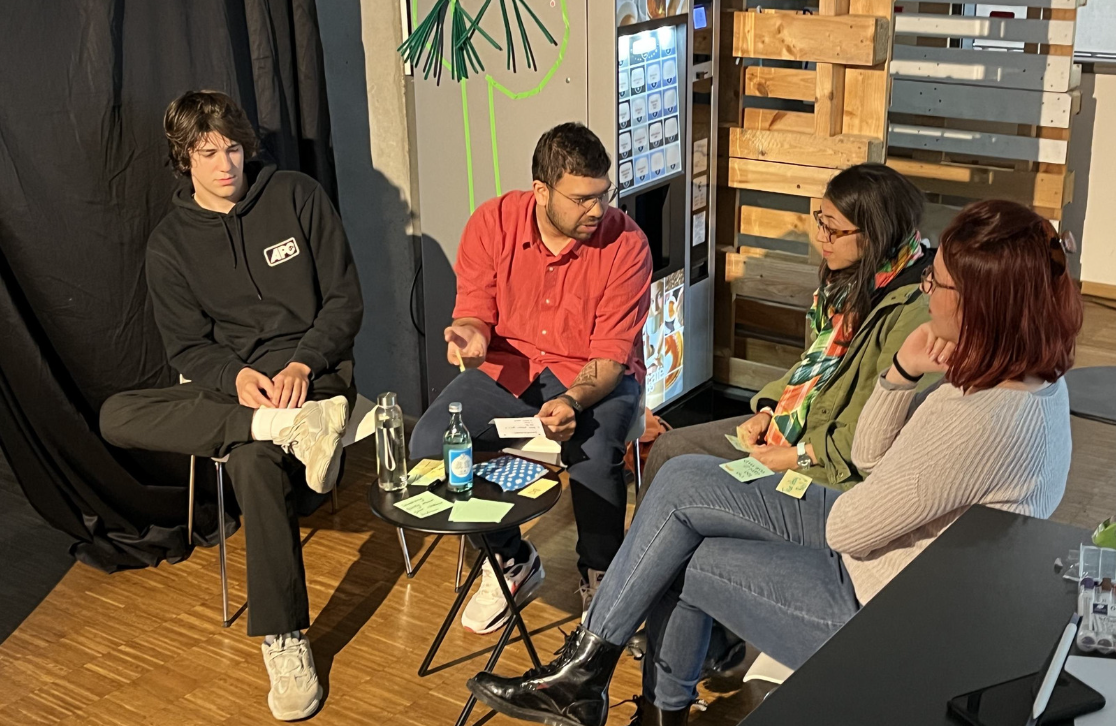
                             
|
|
Protoacting
What?
When?
When you want to deemonstrate your work in a quick, cheap and entertaining way!
How?
 Make sure to read the best practices. You can find them on the right
Make sure to read the best practices. You can find them on the right
 Identify a user segment related to your topic.
Identify a user segment related to your topic.
 Identify the areas of research that you would like to tackle.
Identify the areas of research that you would like to tackle.
 Ideate different probes, each of them with a specific objective. You can refer to the template (see button on the right) to help you through this step.
Ideate different probes, each of them with a specific objective. You can refer to the template (see button on the right) to help you through this step.
 Make a plan to organize yourself for : the ideation, the design, the material shopping, the crafting, the targeting, the contacting and the return date.
Consider setting margins for the schedule, and a plan B if things don't go as planned. Organize yourself better by also evaluating your expenses and creating a sheet with all your users and their contact.
Make a plan to organize yourself for : the ideation, the design, the material shopping, the crafting, the targeting, the contacting and the return date.
Consider setting margins for the schedule, and a plan B if things don't go as planned. Organize yourself better by also evaluating your expenses and creating a sheet with all your users and their contact.
 Buy the materials you will need, both for the crafting, and for helping the respondant through the experience: providing pencils, stickers, cameras if applicable... Keep in mind that ergonomy for the user is crucial for keeping them commited.
Buy the materials you will need, both for the crafting, and for helping the respondant through the experience: providing pencils, stickers, cameras if applicable... Keep in mind that ergonomy for the user is crucial for keeping them commited.
 Craft your your probes. Create a set (physical, digital or both) with clear instructions on how to complete them.
Craft your your probes. Create a set (physical, digital or both) with clear instructions on how to complete them.
 Send the package to the user and specify when you need it back. Keep their contact and check on them from time to time. Also, you can send further (easy) instructions on the go.
Send the package to the user and specify when you need it back. Keep their contact and check on them from time to time. Also, you can send further (easy) instructions on the go.
 Get the package back on the agreed date, and start analyzing your data.
Get the package back on the agreed date, and start analyzing your data.
Keywords
|
Probe |
Input |
Personnal |
Immersion |
User |
Research |
Private |
Daily |
|---|
